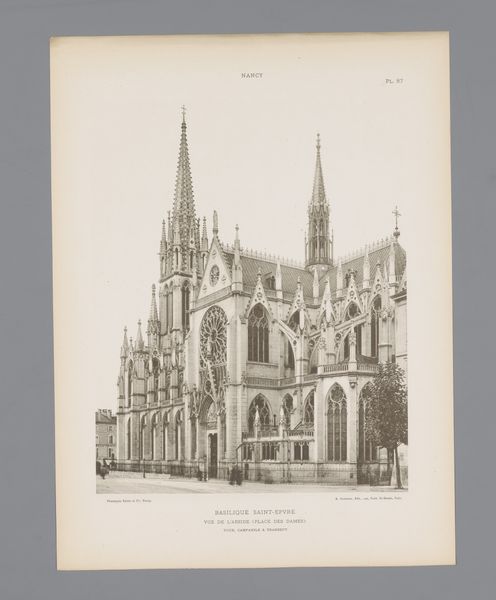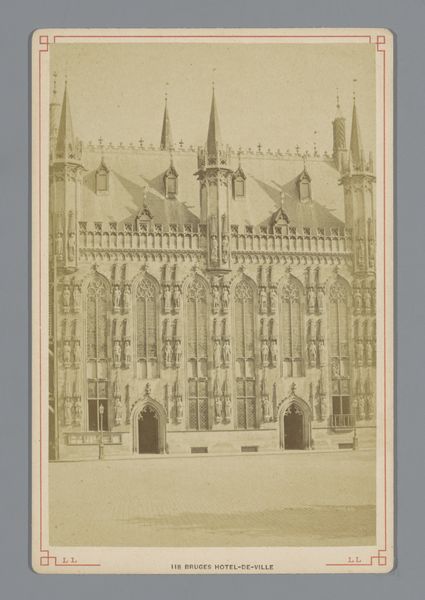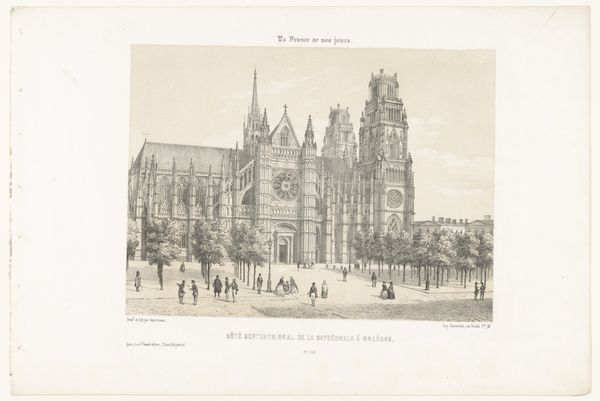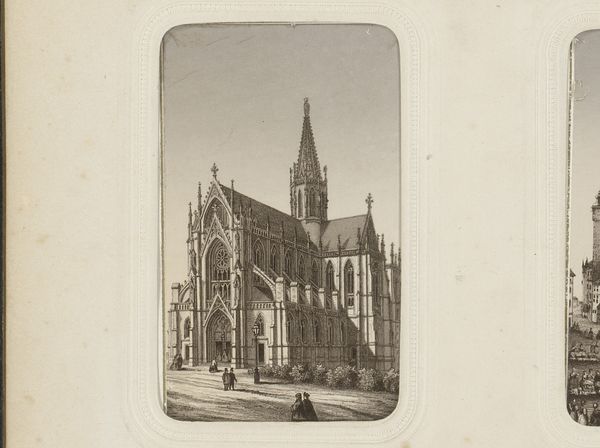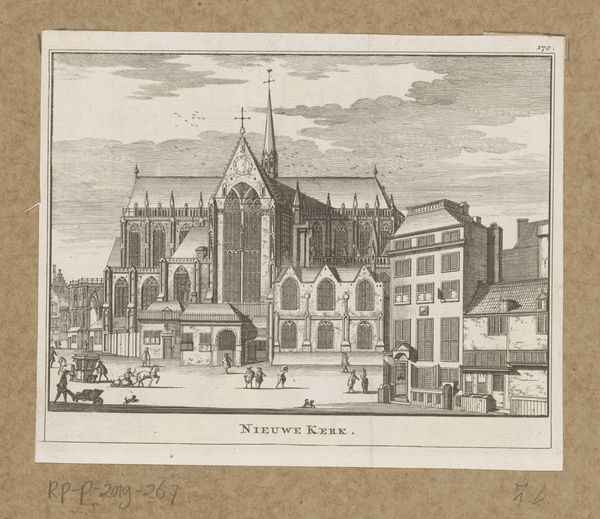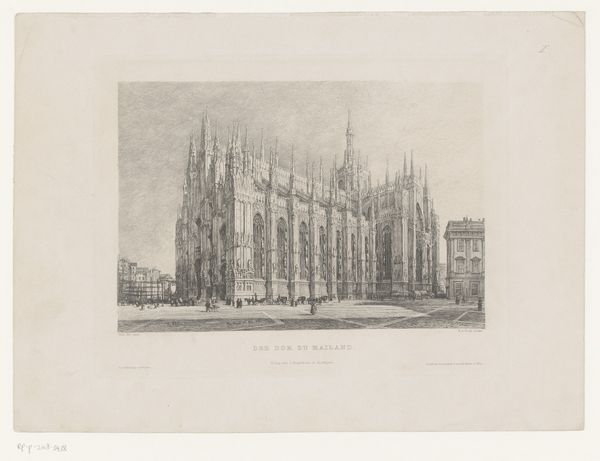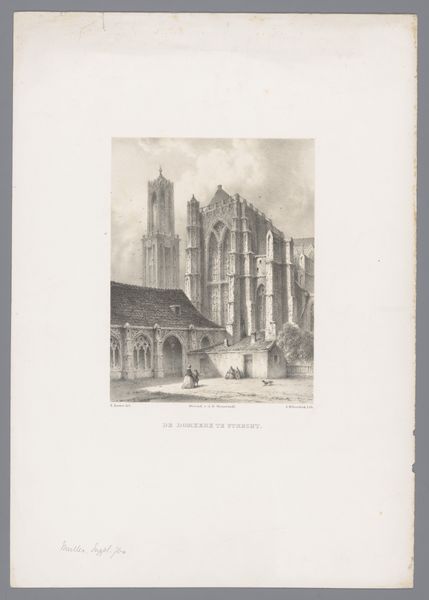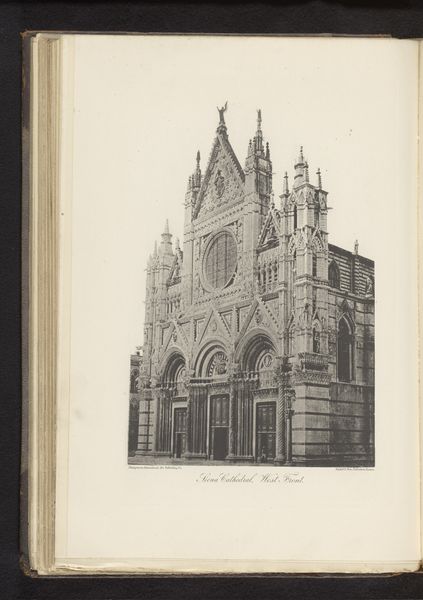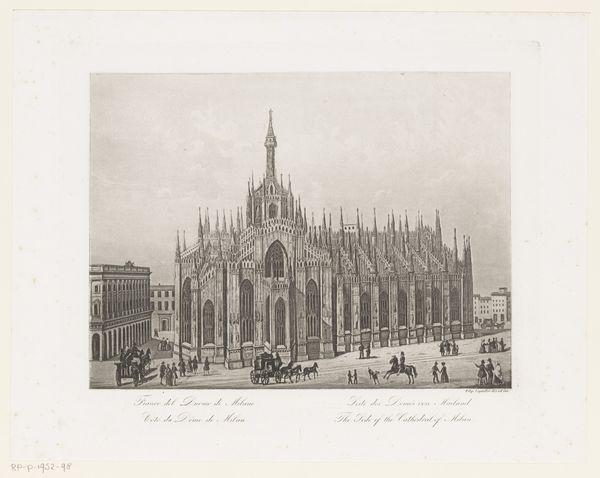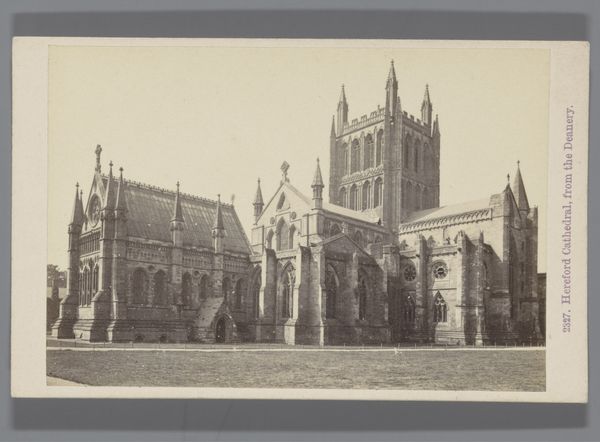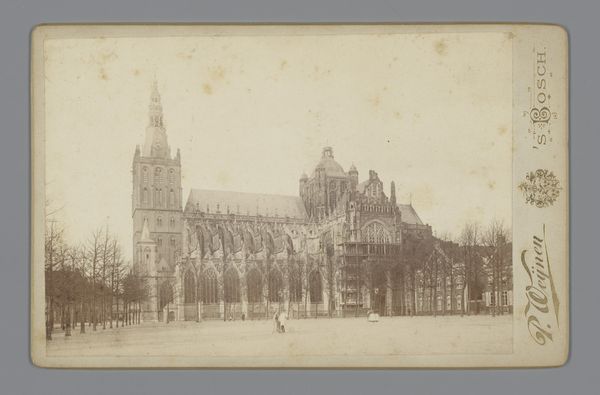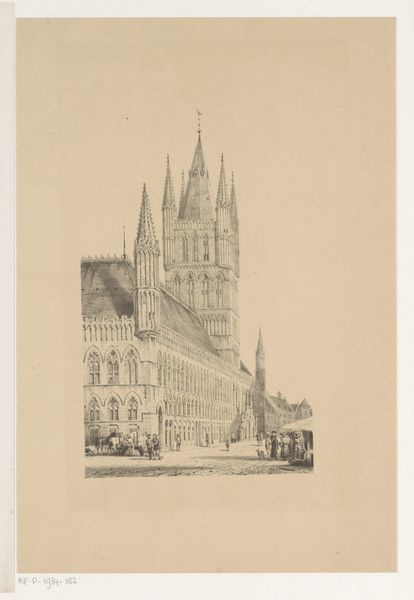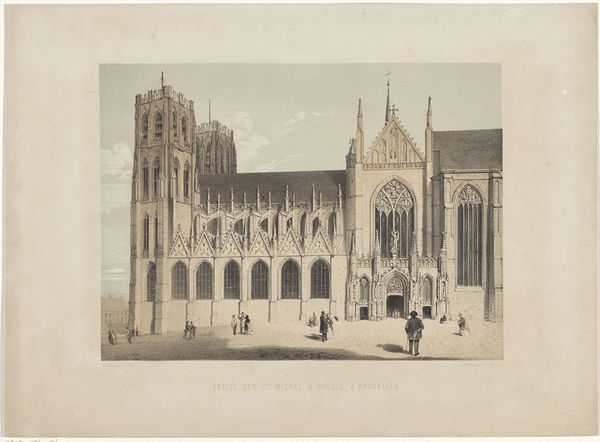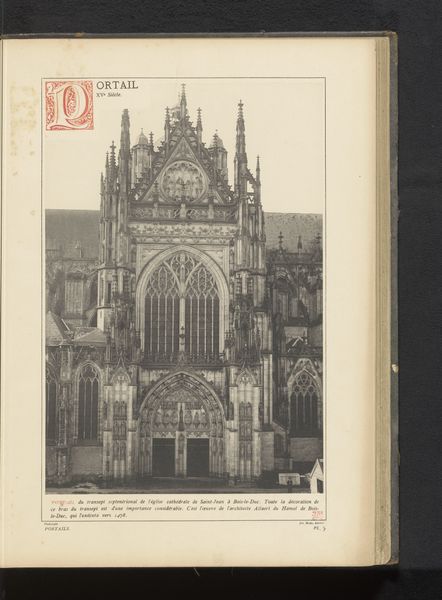
print, engraving, architecture
# print
#
cityscape
#
engraving
#
architecture
#
realism
Dimensions: height 165 mm, width 196 mm
Copyright: Rijks Museum: Open Domain
Curator: This engraving from 1873 by Johann Georg Hechler offers us "A View of the Town Hall in Bruges." It's a compelling cityscape that captures the intricate details of Gothic architecture. Editor: My first impression? It feels incredibly formal, almost austere, yet also kind of romantic with those pointed spires reaching up. I love the precision, it almost feels like a blueprint turned art. Curator: Well, cityscapes like this served an important public role. The rise of printmaking allowed for the wider circulation of images, documenting and celebrating civic pride in burgeoning urban centers like Bruges. Editor: True, but doesn’t it also sanitize reality a bit? Look how perfectly everything lines up, how neat the tiny figures are. Where's the messy, unpredictable life of the city? It's like Bruges is putting on its Sunday best for the viewer. Curator: That's precisely the point. These prints were often commissioned by civic authorities to project an image of order, prosperity, and historical significance. This served political and economic functions, showcasing Bruges as a desirable place for trade and investment. Editor: So, it's PR then! Beautifully executed PR, I'll give you that. But it also highlights how art can be complicit in shaping public perception. Curator: Precisely. And it shows the power of architecture as a symbolic language. The Gothic style itself was chosen deliberately to evoke a sense of historical grandeur and link Bruges to a glorious past. Think of this period; newly formed national identities looked to architectural examples of past empires as their visual cue. Editor: That’s interesting because what truly captivates me is the level of detail Hechler achieved with an engraving. The play of light and shadow, especially in those windows, it's stunning. It almost transcends the formality and reveals a touch of the artist's soul. Curator: Absolutely. The technical skill involved is undeniable, adding another layer of appreciation to its historical context. It reminds us that even within prescribed artistic and political frameworks, individual artistry finds a way to shine through. Editor: So, from polished civic facade to glimmer of human touch… not bad for a two-minute encounter! Curator: Indeed. It underscores the layered interpretations embedded in historical imagery, challenging us to see beyond the surface.
Comments
No comments
Be the first to comment and join the conversation on the ultimate creative platform.
